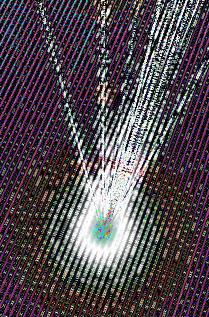Locals take quantum step
 Australian engineers have taken the latest step closer to quantum computing with a new optical microchip.
Australian engineers have taken the latest step closer to quantum computing with a new optical microchip.
Researchers at Griffith University, the Australian National University and the University of New South Wales-Canberra came together under the ARC Centre of Excellence for Quantum Computation and Communication Technology to investigate an optical microchip with the basic functionality required for creating future quantum computers.
It is the first optical microchip to generate, manipulate and detect a particular state of light called squeezed vacuum, which is an essential resource for a certain protocol of quantum computation.
This involved the integration of three of the basic steps needed for an optical quantum computer, which are the generation of quantum states of light, their manipulation in a fast and reconfigurable way, and their detection.
The microchip, which is 1.5cm wide, 5cm long and 0.5mm thick, has several components that interact with light in different ways.
These components are connected by tiny channels called waveguides that guide the light around the microchip, in a similar way that wires connect different parts of an electric circuit.
The first part generates a type of quantum light called a squeezed vacuum. There are two squeezed state generators on the chip, which are connected to the two inputs of a device known as a reconfigurable directional coupler, which can entangle the two squeezed states, with a controllable amount of entanglement.
To measure the entanglement generated in the microchip, both outputs of the directional coupler are guided to separate measurement components, known as homodyne detectors. The homodyne detectors allow measurement of the quantum light that prove entanglement.
The next step for the microchip is to develop ways to integrate of single photon detectors and other quantum state engineering functionality.
Griffith associate professor Mirko Lobino says this “next generation of photonic microchips … will be more complex and have better performance, to take another step closer to a practical quantum computer”.
“Aside from being able to engineer new drugs and materials, and improve energy-saving methods, optical quantum computing will enable ultra-fast database searches and help solve difficult mathematical problems in many different fields,” he said.







 Print
Print